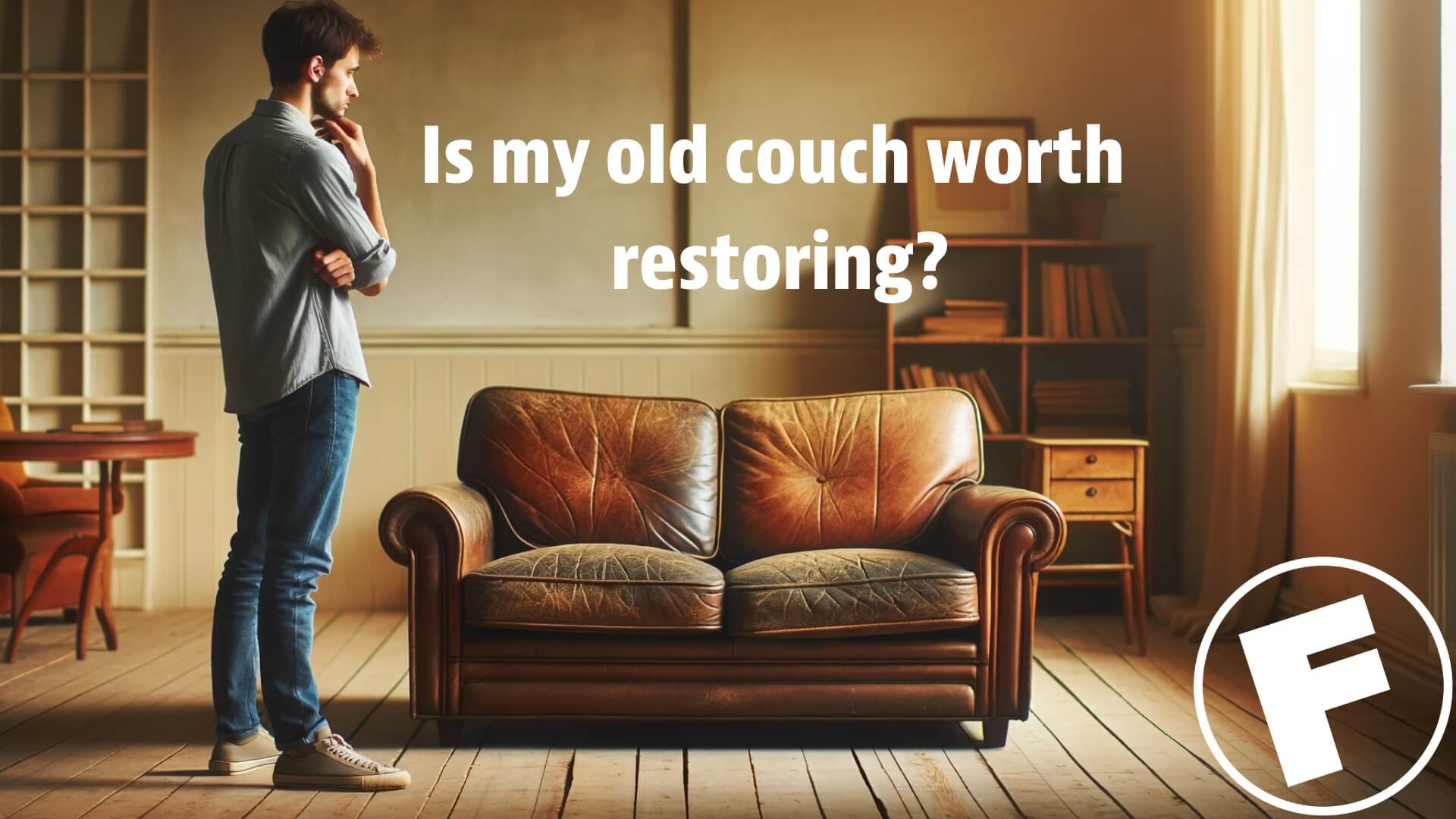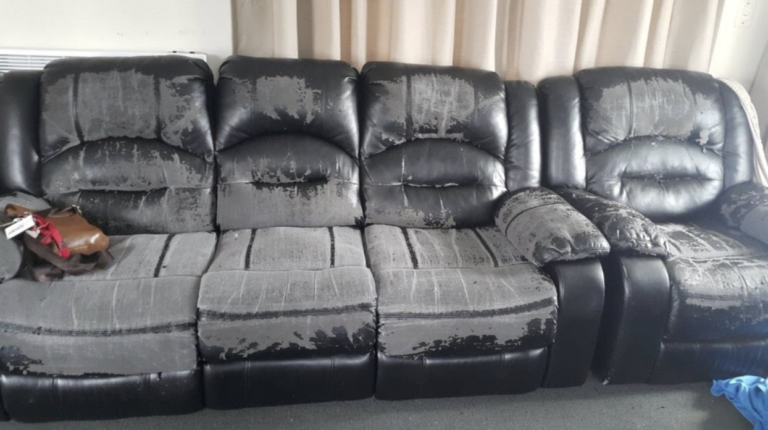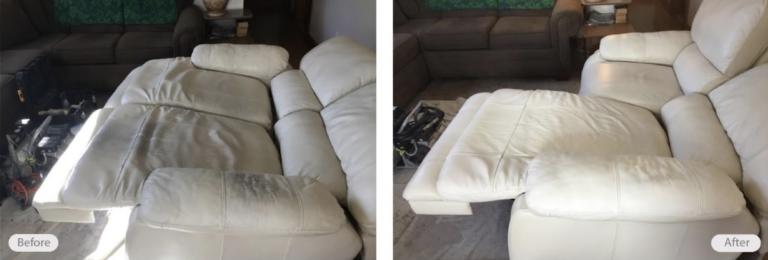How to Determine if Your Furniture is Worth Restoring
We’d all love our favorite piece of furniture to last forever… But sadly that is never the case.
Regardless of whether it’s collectible, antique furniture, or the greatest craftsmanship available—wear and tear and the unstoppable flow of time will always affect your items. So when should furniture restoration be the answer, and when is it time to let go? Let’s examine that question.

What should I consider when thinking about furniture repair or refinishing?
There are a few useful questions to ask yourself:
- What’s the furniture worth—both in dollars and cents and sentimental value?
- What would replacement cost be vs. restoring?
- What type of material is it exactly?
Questions 1 & 2 will be easy to answer. Question 3 can be mysterious at times and it may be the key to whether or not it’s worth repairing at all. Let’s explore.
Determine the material your furniture is made of
In our line of work, we’re not talking about wood furniture or the actual framing. We’re talking about the upholstery. The leather, vinyl, or plastic components of your furniture.
In most cases—someone would want to put time and money towards repairing high-quality leather furniture. Most commonly when it happens to be an antique piece, family heirloom, or simple has a high degree of functionality or emotional significance.
So, in this article, we’ll be focussing on leather upholstered items rather than raw wooden furniture or the like.
First, determine:
Is it genuine leather or is it bonded leather?
If the top layer of the furniture is flaking and peeling away like sunburnt skin, chances are likely that you have bonded leather, which isn’t actually leather.
If you’ve got bonded leather, here’s the black-and-white answer to question #3 above: it can’t be repaired.

Bonded leather couch with typical flaking and peeling
Why? Bonded leather is like the hotdog of leathers. It’s made of tiny bits of shredded leftover leather that’s sprayed onto the back of a piece of vinyl.
The top side of the vinyl is then stamped and colored to have a leather-like look, but it’s far from actual leather. The complex manufacturing process of bonded leather can’t be replicated as a repair process, therefore, once bonded leather starts peeling, you’re generally out of luck when it comes to repair options.
On the other hand, if you have genuine leather furniture that looks tired, dirty, or has stains, you do have some DIY options. With a little bit of know-how, even if you have old furniture that’s in less-than-good condition—genuine leather is hardy and worth restoring.
Dedicated leather care products are your first line of defense
There are many furniture cleaners and protectors on the market that homeowners can try themselves, Fibrenew’s Professional-Grade Care Kits being one of them. these kits work on any genuine leather product: modern furniture, new pieces, or old pieces alike.
Using a two-part cleaning and protection kit will always produce better results than an all-in-one solution you might find at your local hardware store. It’s worth the extra step for touchups or full cleans—and it’s not all that time-consuming.
Oftentimes, a thorough cleaning and conditioning can make a leather couch look a lot better. Just like mom used to tell you, always follow the kit’s directions and do your best.

Genuine leather couch cleaned and protected with a 2-step care kit
If you have rips, tears, pet damage, or fading on your leather furniture, that’s where DIY becomes more difficult. There are repair kits on the market that promise ‘like-new results’ in restoring color or covering blemishes and damage. Again, we turn to mom’s advice to never take candy from a stranger – that is, don’t take the bait with these repair kits.
Matching the color, texture, and grain of a piece of leather is akin to cosmetic surgery of your leather couch. There is both an art and a science to this and it’s best to call a trained professional for help.

Genuine leather couch professionally restored
Review: 8 considerations when determining if your leather furniture is worth restoring
Here are steps to help you make an informed decision:
- Assess the Furniture’s Condition
- Examine the leather: Check for signs of wear, such as scratches, cracks, peeling, or discoloration. Minor surface imperfections can often be addressed during restoration.
- Inspect the frame: Ensure the frame and structure of the furniture are sound. If the frame is damaged or weakened, it may be more challenging and costly to restore.
- Check the cushions and padding: Assess the condition of the cushions and padding. Sagging or lumpy cushions may need replacement or re-stuffing.
- Consider the Furniture’s Quality
- Evaluate the original quality of the piece. High-quality leather furniture, made from full-grain or top-grain leather, is typically more worth restoring than lower-quality alternatives.
- Determine if the furniture is a valuable designer or vintage piece. Such items often have greater resale and sentimental value.
- Think About Sentimental Value
- Consider the sentimental significance of the furniture. If it holds sentimental value, such as being an heirloom or a cherished piece, you may be more inclined to invest in its restoration.
- Research Restoration Costs
- Contact professional leather furniture restoration specialists to obtain quotes for the required repairs or restoration work. Factors like the extent of damage, type of leather, and location can affect the costs.
- Ask for a detailed breakdown of the restoration process and expenses so that you can make an informed decision.
- Estimate the Value After Restoration
- Research the potential resale value of the furniture after restoration. High-quality leather furniture that has been properly restored can retain or even increase in value.
- Compare the estimated post-restoration value to the cost of restoration to see if it’s financially justified.
- DIY vs. Professional Restoration
- Assess your own skills and capabilities. Some minor leather repairs or maintenance tasks, such as cleaning and conditioning, can be done by DIY enthusiasts. However, more extensive or complex restoration work is best left to professionals.
- Weigh the Pros and Cons
- Weigh the costs of restoration against the furniture’s sentimental value, quality, and potential resale value. Consider the overall investment in relation to your budget.
- Seek Expert Opinions
- Consult with professional leather restorers or appraisers for their expert opinions on whether restoration is advisable and cost-effective.
In summary, the decision to restore leather furniture should be based on the furniture’s condition, quality, sentimental value, potential resale value, and restoration costs. It’s essential to consider all these factors and consult with experts if necessary to make an informed choice.
High-quality leather furniture with sentimental or intrinsic value is often a good candidate for restoration, but for lower-quality pieces or those with extensive damage, replacement might be a more practical option.
Call Fibrenew for the best restorations available
Take pen to paper and sketch out the pros and cons of whether your furniture can be repaired based on its value, your available time, what type of damage it is as well as its material, then make a call from there. When in doubt, reach out to a Fibrenew restoration professional for guidance.
And if we’ve piqued your interest in leather repair and restoration, maybe owning and running your own mobile leather, vinyl, and plastic repair business is worth a think. Check out our free Franchise Information Report for details. Catch ya later!


